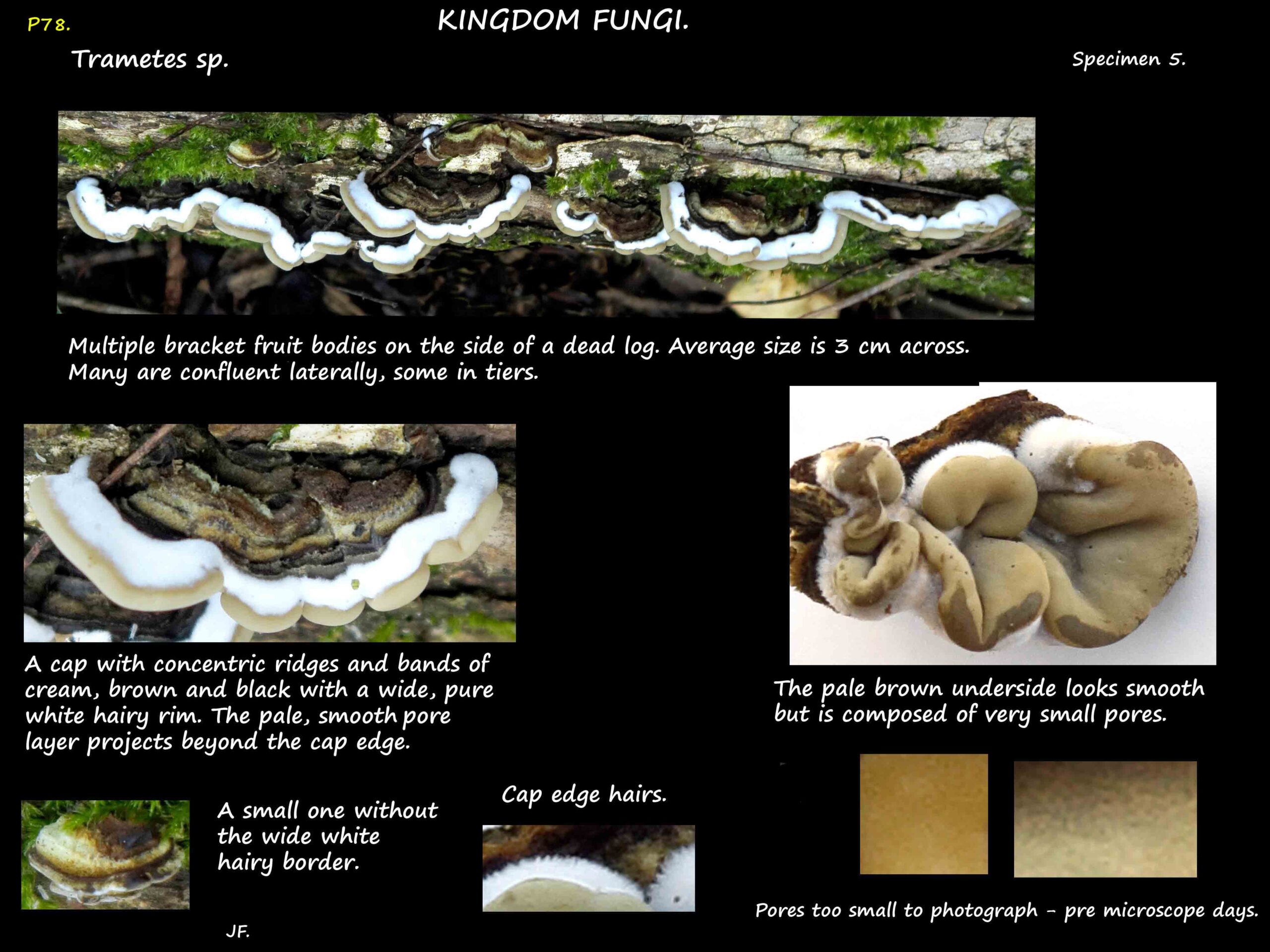Trametes sp.
Fungi > Basidomycota > Agaricomycetes > Polyporales > Polyporaceae.
There are almost 200 species of fan shaped brackets with pores underneath.
They are found on dead or living wood.
The thin, leathery brackets grow to 7 cm or more across.
They frequently fuse laterally to form extensive shelves.
The youngest fruit bodies are white.
Older caps have an upper surface with concentric zones of colour and texture.
Colours include shades of red, brown, rust, black and grey.
Texture varies from smooth to velvety with many very short hairs.
Some have a white margin which may be wavy.
Their appearance is very variable and older ones may become greenish from algae.
Older species may not be able to be reliably identified.
The pore surface is cream but becomes brownish in older specimens.
Spores are released from tiny pores that may need magnification to be seen.
The 2023 Australian census lists Trametes elegans, T. hirsuta, T. lactinea, T. meyenii, T. modesta and T. versicolor.
INaturalist’s notes on Australian Trametes species say “Since so many records turn out to be different from what they were initially identified as, I only accept species that are vouchered by herbarium collections AND have sequence information…”
J.F.




